The longer you can keep users on your website, the greater the benefits. Engaged users are more likely to convert or become repeat visitors, which will eventually lead to more traffic and sales.
Despite what Google officially says, it's also good for your SEO if you can avoid Google visitors going back directly to the search results.
Besides taking care of the basics like mobile friendliness, page speed, and search intent, there are proven and tested techniques to dramatically reduce your bounce rate, and this is exactly what you’ll learn in this post.
What Is Bounce Rate?
A bounce rate is a percentage that shows how many users landed on a webpage and then exited the website without having any interaction on the page.
In other words, those users were not engaged with your content. They did not click any links or visit a second page. They entered, did nothing, and then left.
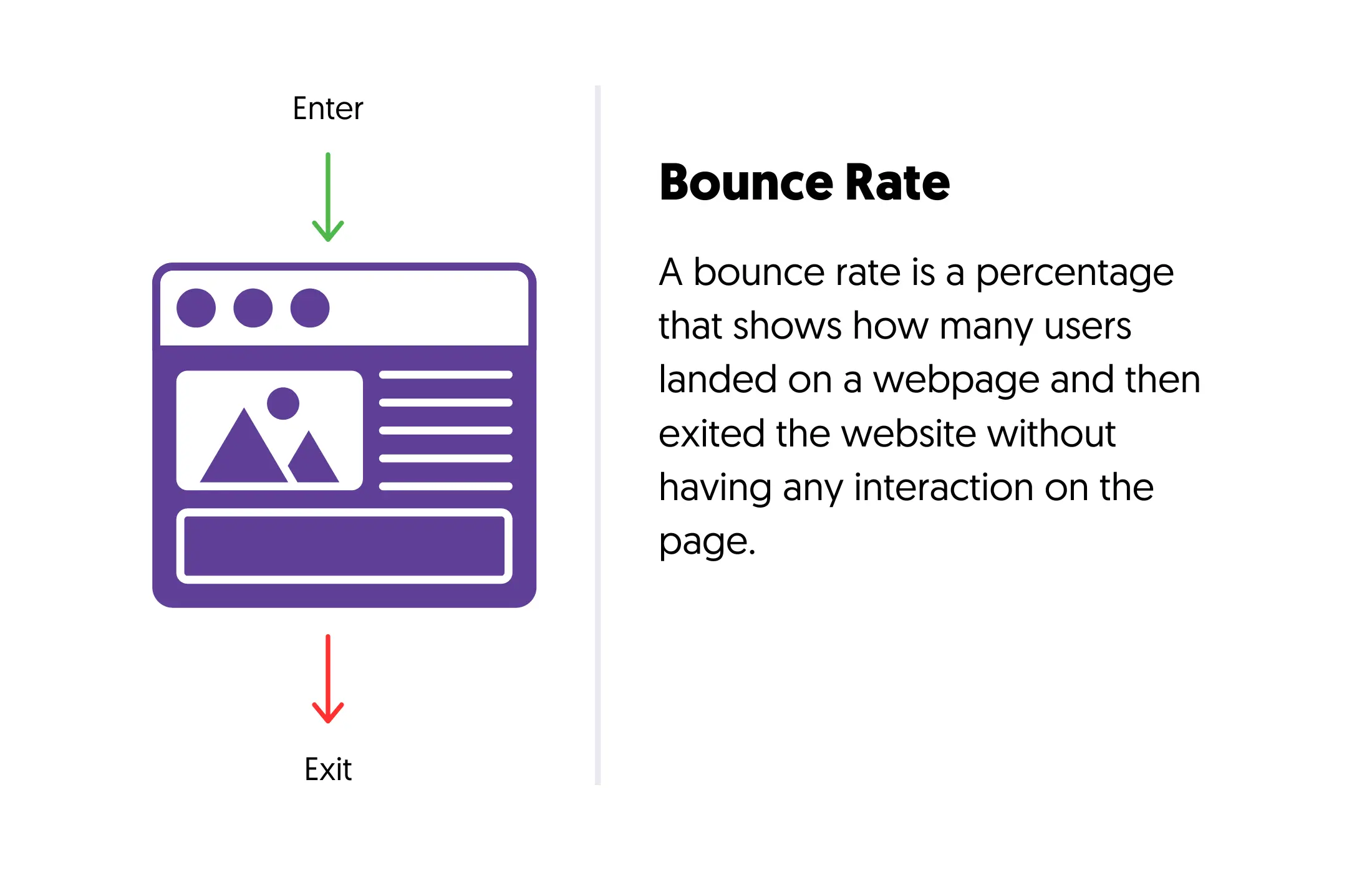
The opposite of the bounce rate is the engagement rate, a metric that shows the percentage of users who engage with your content before leaving your site.
Why Do People Generally Bounce?
To reduce your bounce rate, you should first understand why people bounce. The most common reasons users leave a website without engaging are:
- The content is not what they are looking for
- They don’t trust the website as a reliable source
- The content is difficult to read
- It’s difficult to distinguish the main content from ads
- They could not find an easy way to navigate to more pages of the same site
10 Proven Ways to Reduce Bounce Rate
- Add an E-E-A-T Teaser Above The Fold
- Use a Sticky Header Menu
- Make Your Headings Skim-Readable
- Make Text Content Easy to Read
- Add Lots of Visuals
- Use Multiple CTAs Throughout The Content
- Last Updated Date, Table of Contents, Breadcrumb menu
- Optimize Your Internal Links
- Use an Exit Popup or Slider
- Open Links in a New Tab
1. Add an E-E-A-T Teaser Above The Fold
The ‘Above the Fold’ area is the most important page of a page. It’s the content that users see once they land on a page, and you have less than 3 seconds to grab their attention before they leave.
A proven way to do this is to add a teaser that confirms your experience and expertise about a topic so that users can trust your content and continue reading.
Let’s see a few examples to understand how effective this technique is.
In our SEO Tips post, to hook users and convince them that what they’ll read in the post are tips that work, we added a screenshot showing our rankings in the top 10 of Google.
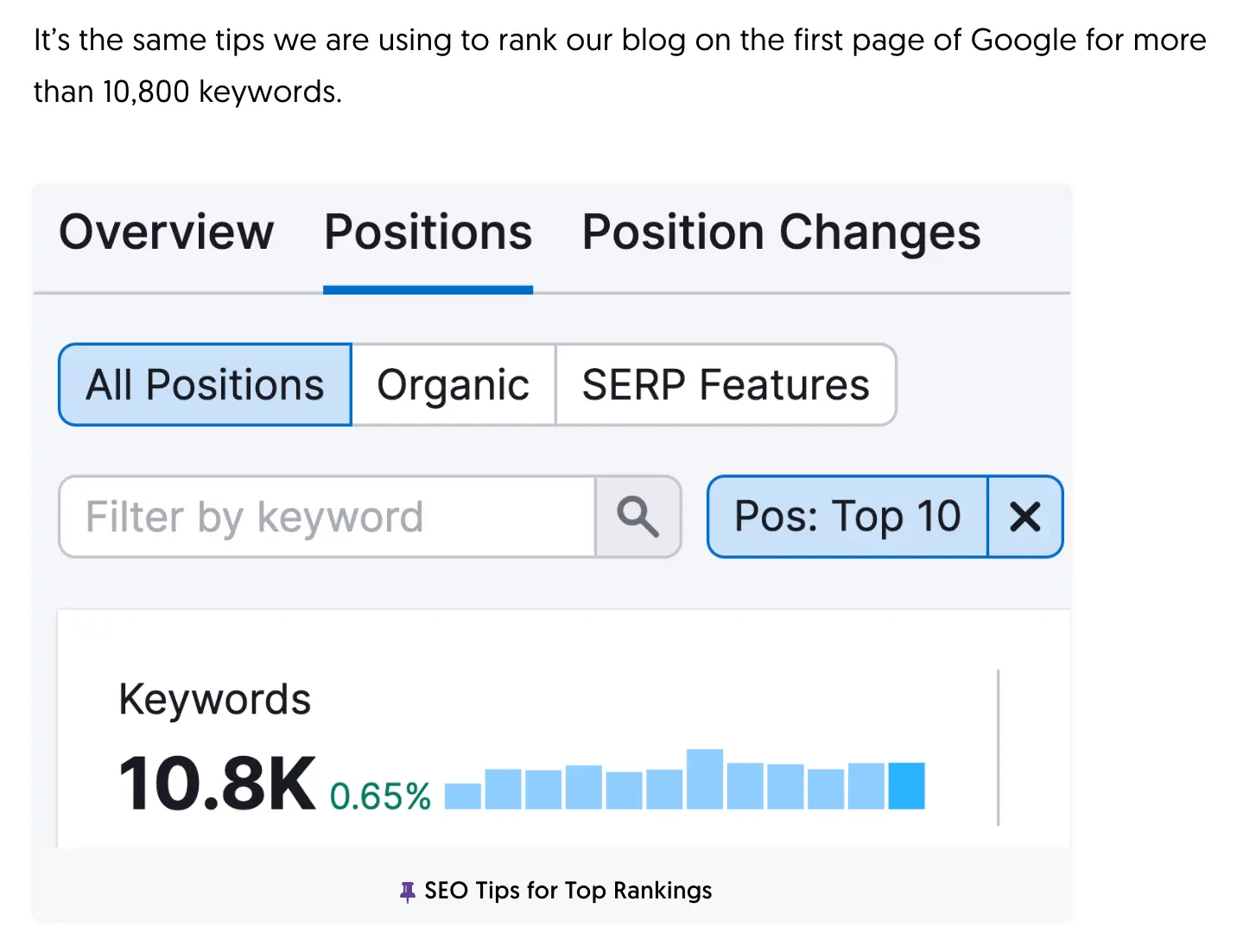
If you visit any review on Wirecutter, you’ll see a section, ‘Why you should trust me’ on top of the articles.

Forbes does the same thing in their articles.

2. Use a Sticky Header Menu
Another technique to engage users is to have a sticky header menu. A good example is the menu on our website.
We did a lot of testing and found out that having a menu that is always visible reduces the bounce rate by encouraging users to click on the menu links and visit other pages.
Our menu includes links to our ‘sales’ pages, which is a great way to funnel traffic to your most important pages.
A lot of popular websites use this technique, and it works great.

When trying to improve your bounce rate, always think of ways to help users find what they want in the fastest possible and not hide important information.
If you want users to visit a particular section or page of your website, make sure that it’s easy to do so without going through a series of clicks.
3. Make Your Headings Skim-Readable
Another tip for improving your bounce rate is to give special attention to your headings.
Users tend to scroll down a page and only stop to read a piece of content if the heading is interesting and catchy.
As a first step, you need to ensure that your headings are formatted differently from the rest of the content so that they stand out. Using a bigger and bolder font can do the trick.
Besides formatting, to make your headings skim-readable, use the following tips:
Include keywords - Having keywords in your headings helps users understand what the particular section is about, and it’s also eye-catching.
Be specific - Clearly state what the section is about without being too verbose.
Follow a hierarchical structure - When using headings, make sure that you follow a hierarchy. Your title should be marked with an H1 Tag, your main headings with H2, and sub-headings with H3.

Following the above tips is not only good for making your content more attractive to users, but it’s also good for your SEO.
4. Make Text Content Easy to Read
Besides headings, one way to keep users on a page for longer and reduce the bounce rate is to create easy-to-read text content.
This is particularly important on mobile devices where the screen size is smaller.

Making text easier to read is a matter of:
Use a font size that is large enough to read - Typically, it should be at least 18px on desktop and at least 16px on mobile.
Use short sentences - Keep an optimal line length to prevent reader fatigue - generally 50-75 characters per line.
Use lists - Use bullet points and numbered lists to break up large blocks of text.
Use short paragraphs - Utilize short paragraphs to facilitate easy reading and comprehension.
Use whitespace - Utilize whitespace effectively to give a breather to readers and avoid a cluttered look.
5. Add Lots of Visuals
Even if you make your headings interesting and your content easy to read, a large percentage of your visitors won’t read the content.
People don’t like to read, and a great way to grab their attention, keep them on your website for longer, and turn them into engaged visitors is to use a lot of visuals within your content.
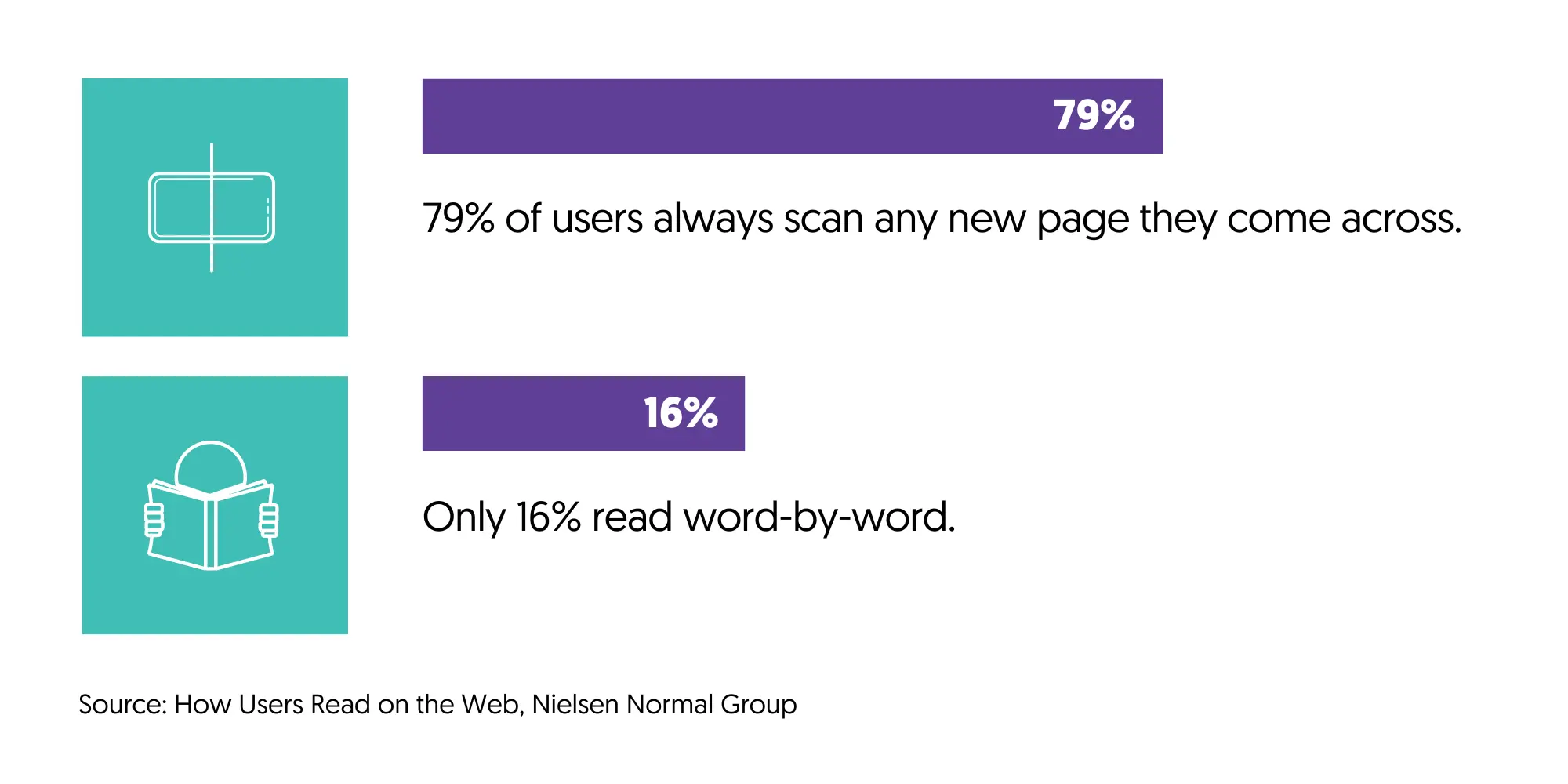
Visuals could be screenshots, images, or custom-made illustrations like the ones used in this post.
Try to add several visuals throughout the text so that users who don’t read the content can get a very good idea of what the article is all about.
6. Use Multiple CTAs Throughout The Content
If you want users to engage with your content, you must make it easy for them to do so. Having a call-to-action button at the top or bottom of your content is not enough.
For maximum engagement, you should use several CTAs to be visible as users scroll through the content.
For mobile users, you can also use a sticky footer. It’s not distracting for users, and it’s a great way to improve your bounce rate.
Here is an example of how we do it for mobile.
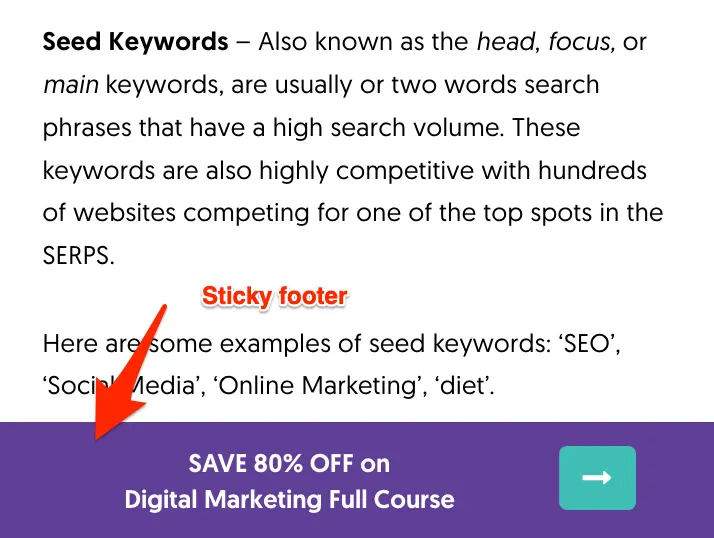
For desktop, you can use a sticky sidebar widget. It’s not intrusive and with the right formatting, it can attract users to click.
Here is an example from Neil Patel’s website.
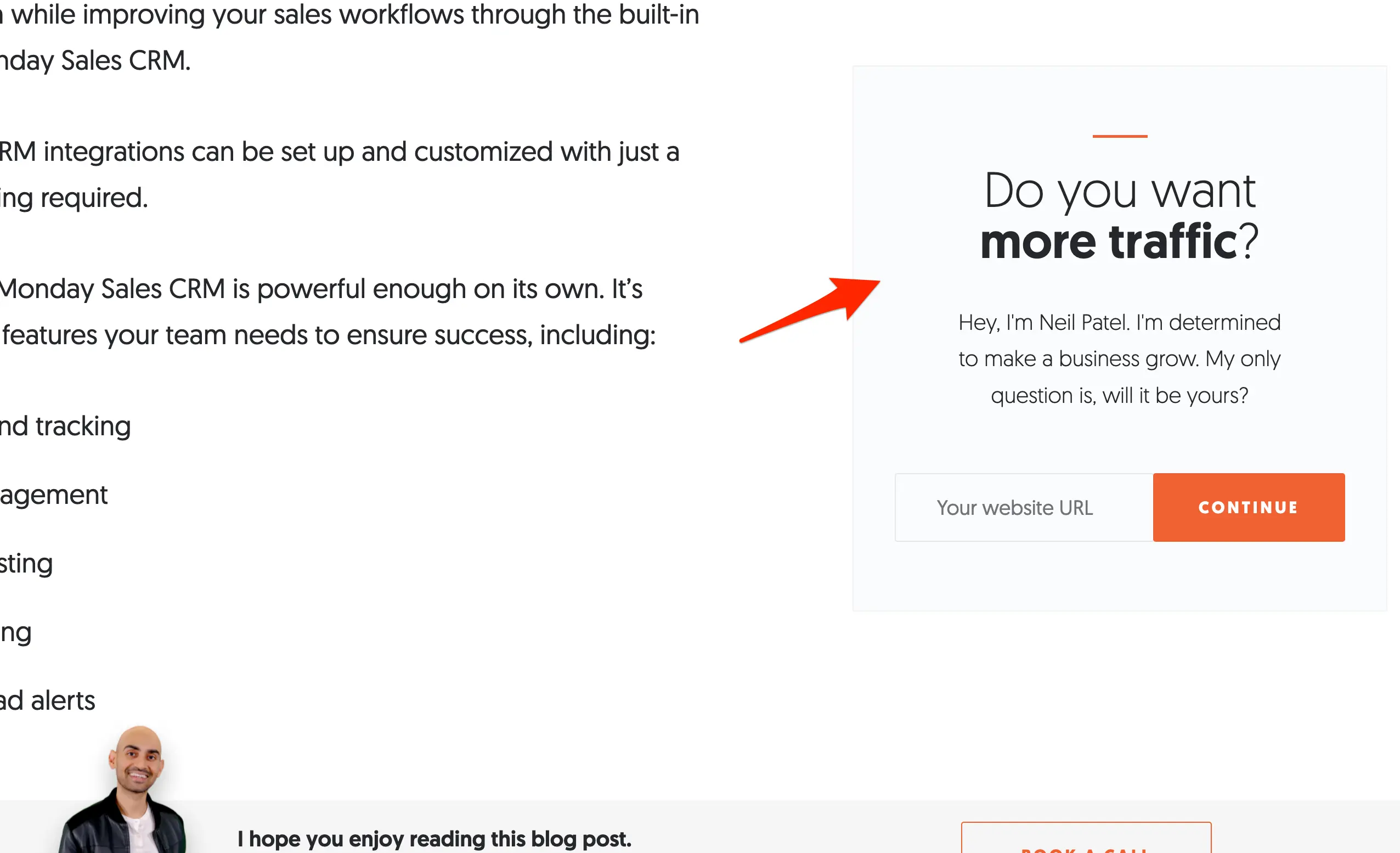
7. Last Updated Date, Table of Contents, Breadcrumb menu
Other less common but still effective ways to help users engage with your content are the following:
Show the last update date on top of a page - Regardless of the topic, users don’t like to read outdated articles.
By showing the date a post was updated, you encourage users to read more. Of course, this entails that you need to keep your content up-to-date and relevant all the time.
Use a breadcrumb menu - a breadcrumb menu is good for search engine crawlers and users. It’s a simple way to get users to read more related content from your site.
Users are accustomed to breadcrumb menus, and despite what you might think, they use them a lot for navigational purposes.
We did several tests before deciding to show a breadcrumb menu on our website, and the results showed that users find them helpful.
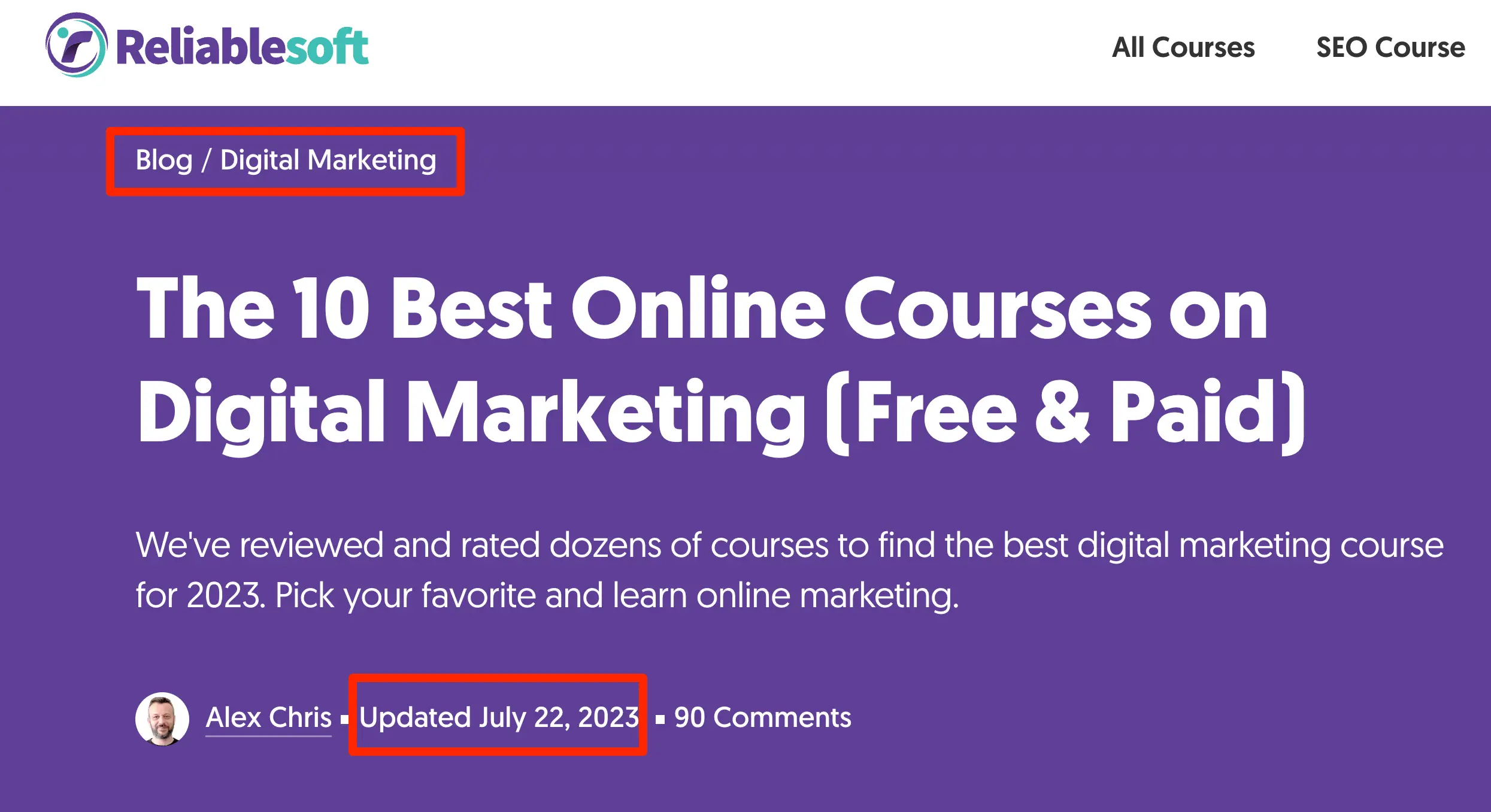
Add a table of contents - If you’ve noticed, we always include a table of contents on top of all our articles. This is either a list of steps to do something (like in this post) or a list of the main sections of an article.
The table includes internal links that direct users to a particular post section. Besides giving users an easy way to interact with your content right from the beginning, it also gives them a sense of what to expect in the content.
Also, when users click a link and then the ‘back button’ on their browser, they don’t exit the page, but they go back to the top.
In addition, this technique is also great for appearing as a featured snippet in Google search results.
8. Optimize Your Internal Links
Another technique you can implement easily and keep users on your website for longer is internal linking.
By adding relevant internal links to your content, you help search engines discover more pages of your site, and users read other articles related to what they are looking for.
To use this technique effectively, follow these simple rules:
Use optimized anchor text - Having keywords in your anchor text helps in getting the attention of users. It’s much better than using things like ‘click here’ or ‘learn more’.
Format internal links differently to stand out - When you want links to additional resources or related articles within a post, you can format the links differently to stand out from the rest of the content.
Here is an example of how we do this:
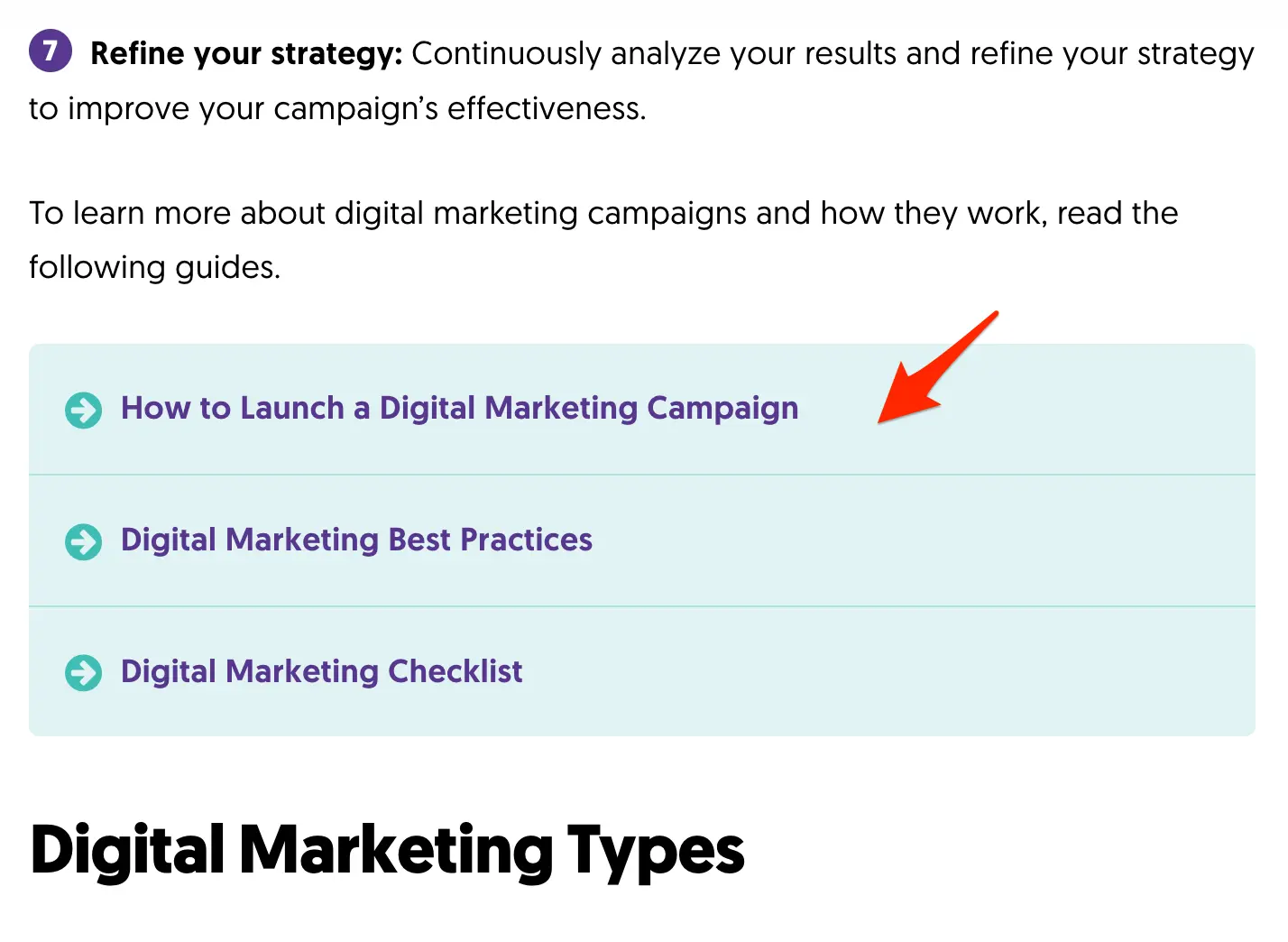
9. Use an Exit Popup or Slider
Exit popups and sliders have a bad reputation because most websites use them incorrectly, hurting the overall user experience.
When used correctly, they can help you increase conversions, sign up more people to your email list, increase engagement, and lower the bounce rate.
Here is an example to understand this better and use this technique to your advantage.
On our Google Project Management Certificate Review page we show desktop users who stay on the page for more than 10 seconds, a slider with a optimized CTA.
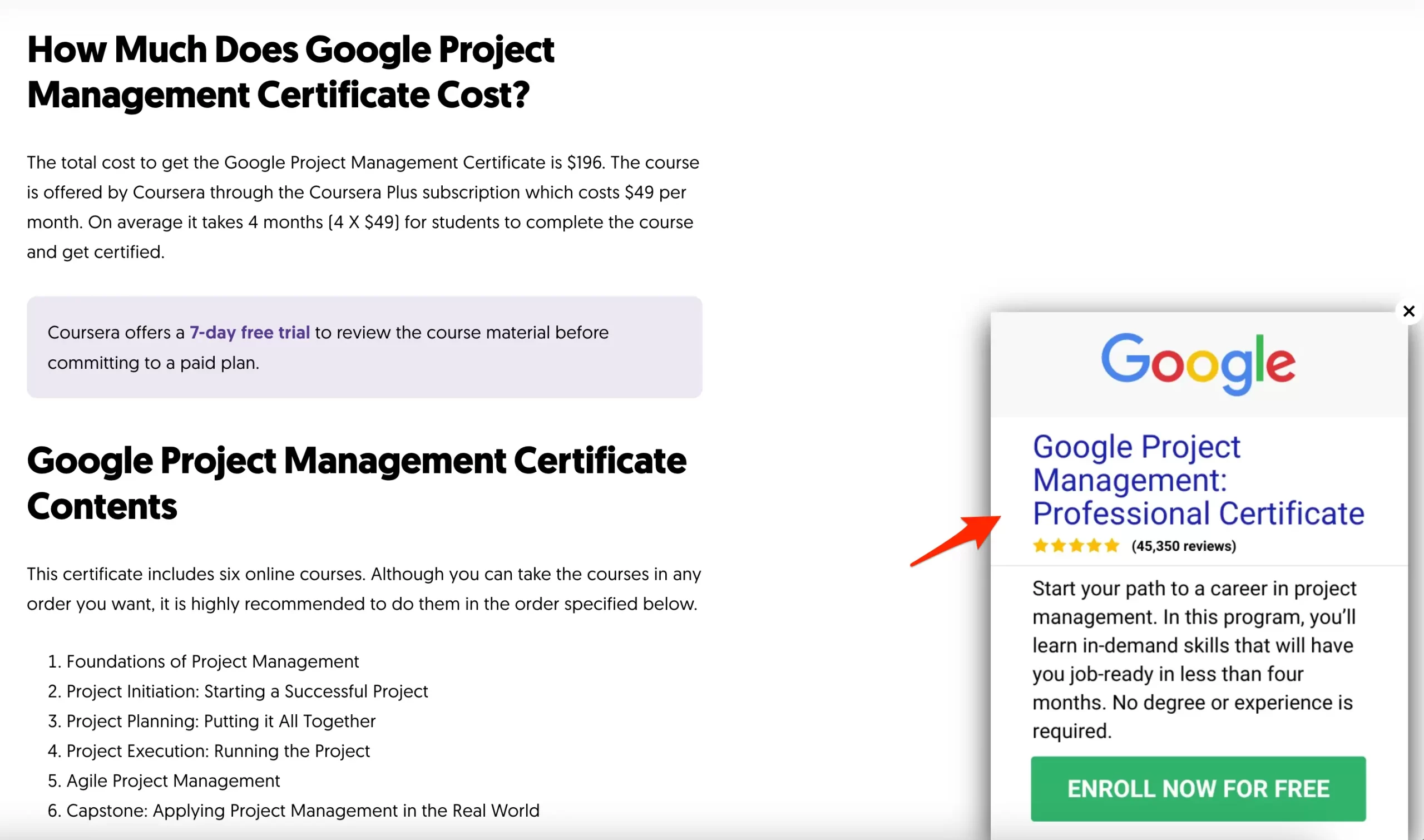
The slider is not intrusive, does not distract users from reading the main content of the page and offers them a free trial.
10. Open Links in a New Tab
A very easy technique to lower bounce rate and increase interaction with your website, is to open any links (internal or external), in a new tab.
When creating a link in WordPress, edit the link and select the “Open in a new tab” checkout.
This simple trick will leave your website open so that users can return to it after reading another page from your website or an external site.
How to Find Your Bounce Rate?
To find out what your bounce rate and engagement rate are, go to your Google Analytics and click the “Pages and Screens” report under Life Cycle / Engagement.
These bounce rate and engagement rate metrics are not shown by default, so you must add them.
Click the ‘Customize Report’ button (top right corner) and then click METRICS.

Search for ‘Engagement Rate’ and ‘Bounce Rate’ and add them to your reports.

What is a Good Bounce Rate?
A good bounce rate varies by industry, but generally, a bounce rate below 50% is considered good. Remember that the lower the bounce rate, the better.
The latest statistics show the average bounce rate per industry.
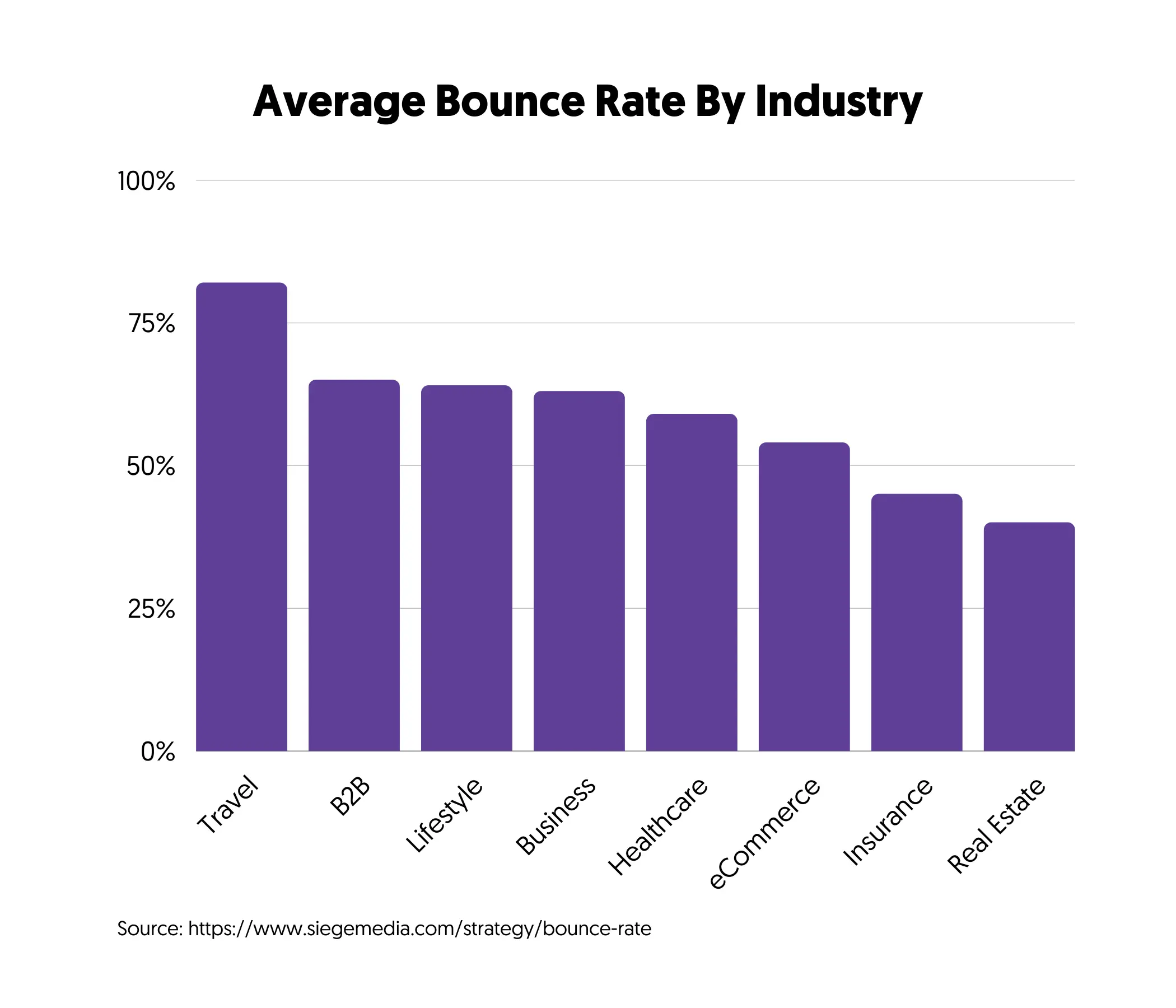
Conclusion
Reducing your bounce rate and increasing your engagement rate can only benefit your website and users.
All the tips presented above have been tested and measured and work for any website.
Nevertheless, the best way to improve your bounce rate is to consider your users and what is best for them. Improving all aspects of the UX like speed, usability, accessibility will eventually lead to lower bounce rates.



